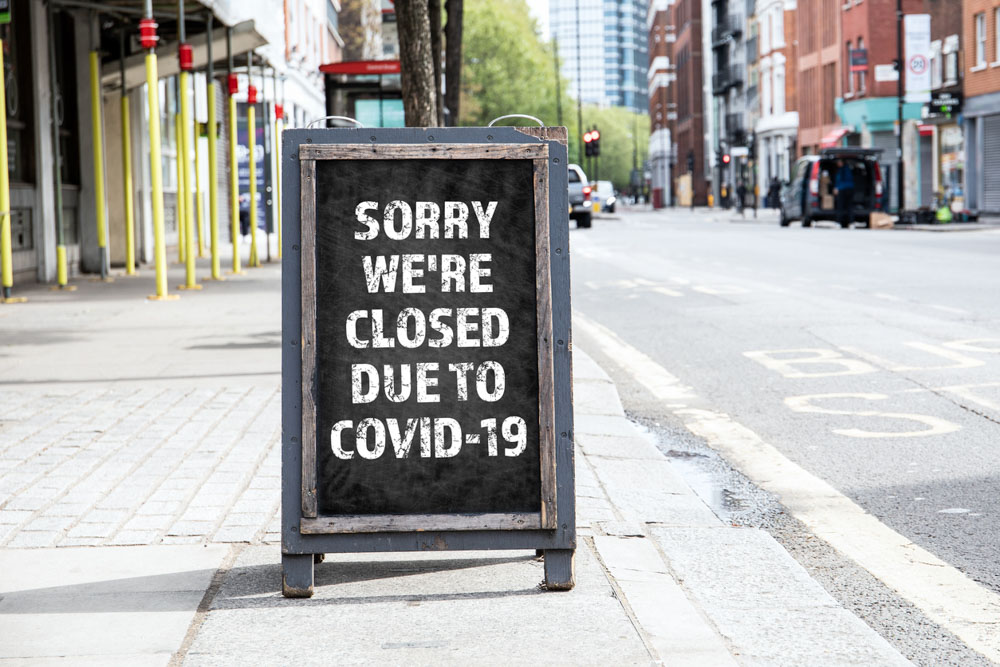COVID-19: the Public Defenders perspective

One of the things that barristers practising in crime enjoy doing is appearing in jury trials. The absence of jury trials from people’s practice has been the most notable (and disappointing) aspect of the COVID-19 shutdown.
The move away from the physical court room and on to the virtual court from March 2020 affected all aspects of court work. Under the guidance of Richard Wilson SC, Deputy Senior Public Defender, the Public Defenders established a web-page which sought to provide to practitioners resources, including links and commentary, on the changes in criminal law, practice and procedure that were brought into effect in response to the pandemic.
As at the time of writing, that web page had received approximately 20,000 hits. The site also sought feedback from users. To date there have been 60 responses, largely left between the end of March until the end of April 2020.
The feedback regarding the use of Audio Visual Links (“AVLs”) has been almost universally negative. Of the 60 responses received at the time of writing, six were positive, nine were mixed and 45 were negative. This applied to sentences, bail applications, appeals, mentions and trials across all jurisdictions: Court of Criminal Appeal, Supreme, District, Local and Children’s Courts.

Issues related to:
- Poor reliability of connections (drop-outs and problems connecting);
- Poor quality of video / audio;
- inability to see / hear one or more participants;
- significant delays in setting up connections;
- difficulties conferencing clients; and
- perceived procedural and forensic unfairness where one party was present in court and the other by AVL.
To some extent, that data probably reflects people’s frustrations and their desire to make this known in the hope the service will improve. In other words, this is qualitative not quantitative feedback and may be skewed towards complaints. There has also been a noticeable drop off in feedback during May, so perhaps people have mastered the technology or the system has improved. Or maybe people have just given up complaining.
Much of the negative feedback was about technical problems which continued to varying degrees despite upgrades and efforts by the Department of Justice. Parklea CC deserves a special mention for the difficulties practitioners had in being allocated a time to speak with their clients either via AVL or even phone. I was told on 4 June that there was simply no more available AVL or telephone times to speak to a client for the rest of the month!
When it came to court appearances, many Sydney based Public Defenders attended the virtual court via the Chambers’ AVL suite because even after mastering the software at home, the capacity of suburban broadband is imperfect: frozen screens, poor quality audio, parties dropping out or simply being unable to dial in adds another layer of stress to what can already be a stressful process. The Chambers’ dedicated AVL suite had none of those problems.
There was no feedback left on the site from people who had run trials remotely, but anecdotally, the general feeling is that running a trial that way is simply not possible. This is not because of technology problems, but as a matter of practicality, fairness and proper advocacy. Trying to have a quick word to your instructing solicitor or client is just not possible. If you need that “quiet word” it requires the other parties to “mute” or “leave” the virtual court, which seems straightforward, but it is disruptive and may mean that practitioners simply do not pause the proceedings and that small detail or clarification is simply lost. For the same reason, having that quiet word with your opposing counsel is equally impossible. Trials involving significant documents or translators are very difficult too and, if there are time delays in the feed, bad connections or (the inevitable) confusion about which page of which exhibit people are supposed to be looking at, the process just doesn’t work.
There is also a real issue about the advocacy aspect as well. There is an obvious lack of connection with the tribunal of fact: eye contact and body language, which is a significant part of human communication and interaction, are largely missing from the virtual court. If this sounds a bit vague and touchy / feely, ask yourself this: what is it like watching a play live, compared to watching a filmed version of it? You see the same movements, hear the same script, but there is an emotional distance and lack of engagement. This is most significant with witnesses and juries. Some practitioners have spoken about the inability to perceive judge’s reactions to submissions and whether they are failing to pick up on body language, a critical component in any advocacy. It would be interesting to hear a judge’s perspective on this.
Another real difficulty with the virtual court is that you don’t know who may be 'online' with you or even in the physical court and the parties may not know about their presence. There have been a number of stories shared involving counsel appearing in the virtual court in matters where they believed the only people watching were the judge and the Crown, only to see their case reported in the newspaper the following day, unaware that journalists were listening in. Obviously ‘open justice’ permits the public being present, but really as a matter of courtesy, it would be nice to know who else is watching or listening.
In summary, the general experience has been that while many kinds of court work have been possible under COVID-19, the experience has been far from optimal.
If the technology were better there is a good argument to be made that appearing via AVL for some things could or should continue. For example, mentions. A number of instructing solicitors made the point to me that it was now possible to appear from home or office in several Local Court mentions in a morning across different locations without the stress of driving from court to court. It was both easier and more financially rewarding, even before factoring in the parking fees, parking tickets, speeding fines and stress.
The Supreme Court’s arraignment list has also been very efficient: you would be allocated your five minutes in the sun; you appeared in front of your screen, your client would appear on his or her screen, you were called upon, you said your piece and then you disappeared. Much faster than waiting around in Court 13C for most of the morning. Regional-based counsel were also spared the necessity to travel to Sydney or use an agent.
There is also a potential benefit with respect to the Court of Criminal Appeal still offering AVL for regional practitioners. It allows people to appear in the court without having to travel to Sydney, which is both a cost and time saving.
Similarly, Sydney based practitioners could continue to attend regional sentence hearings without having to leave Sydney. This is not only a cost saving to the client (in our case Legal Aid or the Aboriginal Legal Service), but it may result in a regional client having a wider choice of counsel to choose from as not all Sydney based barristers are willing to travel to regional areas.
These potential practical advantages need to be weighed carefully against the significant forensic disadvantage of not being in the courtroom. As anyone who has ever been interviewed for an important job by telephone or videoconference knows, there can be significant persuasive advantages in actual physical presence.
It will be interesting to see whether, in 12 months’ time, what, if any, of the Court’s COVID-19 AVL procedures remain. Humans are very good at adapting to and using technology. Hopefully any good things that have come out of this period won’t be ignored and we simply revert to business as usual. The biggest issues, though, are having the software and bandwidth to allow the process to work seamlessly and choosing the types of matters in which they can be deployed without compromising fairness or good and effective advocacy. It cannot be a one size fits all model and in crime, where jury advocacy is required, it is hard to see the virtual court ever working.
... the general feeling is that running a trial remotely is simply not possible. This is not because of technology problems, but as a matter of practicality, fairness and proper advocacy.
BN